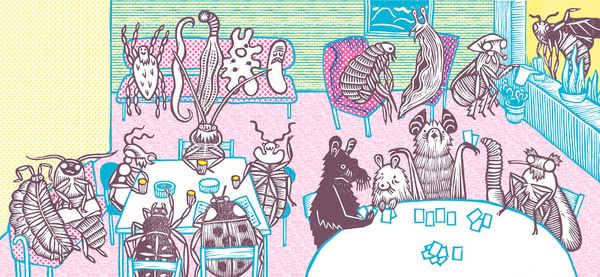„Giving up smoking is the easiest thing in the world. I know because I have done it thousands of times,” said Mark Twain. When did people start to smoke, and where is this habit heading today? Where will it be banned altogether, and where can we still smoke indoors? Is IQOS or Elf Bar the future? These are some of the questions we have been exploring.
Malaysia would ban it
Malaysia would ban smoking and the sale of all tobacco products, including e-cigarettes, to people born after 2007, joining New Zealand lawmakers who have also recently decided to implement such a ban. Health Minister Khairy Jamaluddin presented the bill in parliament on 27 July and indicated that he expects the bill to be debated and passed in the current session, which ends on 4 August.
If passed, the bill, referred to as Malaysia’s „Generation End Game (GEG),” will ensure that people born after 1 January 2007 will not be allowed to smoke, buy, or possess tobacco products even after turning 18. According to the proposal, shops and distributors will be prohibited from selling such products to people in this age group. The ban is intended to gradually phase out nicotine use in the long term until 2040.
Smoking ban legislation is not new; New Zealand introduced it last year. The Malaysians came up with the plan later, but they are more ambitious as their age group starts two years earlier than in New Zealand, where legislation, already passed at the end of 2021, will ban the sale of tobacco products to everyone born after 1 January 2009. The announcement caused a massive media storm, and many experts have been discussing its pros and cons since then. Dr. Eric Crampton, Chief Economist at the New Zealand Initiative, says implementing a ban is expensive, and there are much better ways to get people to quit if that were still the aim of tobacco policies.
Coming back to the Malaysians, it is worth noting that the bill has plenty of economic aspects. „It would cost the government RM8 billion to treat smoking-related health problems if the situation is not brought under control,” said Khairy Jamaluddin. In other words, we are not only talking about a smoker’s harmful and expensive habit but also about an enormous government cost, thus damaging non-smoker taxpayers.

According to a CDC (Centers for Disease Control and Prevention) study, tobacco use leads to about $1.4 trillion in health care costs and lost productivity globally each year. Of course, due to the high taxes, it is also a huge source of national revenue worldwide; however, several studies confirmed that the costs far exceed these revenues. Smoking can also slow down the economy in other ways: a 2006 study found that current smokers missed more days of work and spent more unproductive time at work than former smokers and non-smokers.
So, we can see that there is a rationale for the phase-out, and of course, the Malaysian proposal is not without support: Ann Teo, Chairwoman of The Coalition for Clean and Fair Elections (Bersih), expressed support for the bill. „I can understand the consideration of public health cost to sufferers of diseases resulting from tobacco use as well as to the community at large,” she told The Borneo Post.
Where did this madness come from?
Tobacco was first used by Native Americans for medicinal and ceremonial purposes, usually smoked in pipes. Christopher Columbus indeed brought tobacco to Europe, but its consumption did not get popular until the mid-16th century, when adventurers such as the French Jean Nicot began promoting tobacco use. It is no coincidence that the gentleman’s name rings a bell, as nicotine is named after him. The first record of a smoking Englishman is of a sailor living in Bristol, who was seen „emitting smoke from his nostrils.” Like tea, coffee, and opium, tobacco was also one of many drugs initially used as medicine.

Early anti-smoking voices between 1880 and 1920 were still largely motivated by moral and hygienic rather than health concerns. During the First World War, army surgeons even praised cigarettes for helping the wounded rest and reduce their pain. It was only in the late 1940s and early 1950s that smoking was linked to lung cancer and other diseases.
Gender equality
Tobacco consumption is the leading cause of premature death in EU countries, responsible for around 700,000 deaths yearly. Despite some progress in reducing smoking prevalence over the past decade, in 2019, almost a fifth of the EU population aged 15 years or older reported smoking cigarettes daily. Among the EU Member States, Bulgaria had the highest share of daily smokers, while Sweden had the lowest. It is good news that the Nordic countries, the Netherlands, Ireland, and Estonia, have achieved the largest reductions in smoking among adults over the past decade; however, the use of high nicotine snus has increased in these countries.
Tobacco consumption remains higher among men than women in all EU countries, but the UK, Norway, and Iceland have achieved gender equality in smoking habits too. To reduce smoking, many European countries have made uniform, less attractive packaging compulsory for tobacco retailers, but according to the WHO, rising taxes on tobacco is one of the most effective measures for reducing tobacco use and encouraging people to quit,
By the end of the twentieth century, many countries imposed restrictions
Many governments have passed various laws to reduce smoking throughout history. In India, for example, The Cigarettes Act requires already since 1975 that all cigarette packets, cartons, and advertisements must carry warnings that smoking cigarette is harmful to health. Singapore has also tightened the rules on smoking, with the government increasing the smoking age from 20 to 21 years on 1 January 2020. However, the restrictions are not that severe everywhere, as the minimum legal age to purchase or use tobacco products is 18 in most countries around the world. Interestingly, in Germany, England, and Scotland, for example, the age of consumption was 16 until 2007, but only people over 18 could buy the products in shops.
For a long time, smoking indoors was a completely accepted part of everyday life. In March 2004, Ireland became the first country in the world to ban smoking entirely in workplaces and later in pubs and restaurants. Norway and Italy followed the Irish soon. Other countries joined the team between 2007 and 2010, with Hungary and Bulgaria the last to impose a ban on indoor smoking in 2012.
In Denmark, smoking is still allowed in bars, cafés, and clubs smaller than 40 square meters. The situation is similar in Latvia, Portugal, and Romania, but owners must designate smoking rooms. Slovakia is perhaps the most permissive in this respect, as smoke-free areas are only mandatory where food is served, meaning smoking is allowed everywhere else.
Although smoking is banned, tobacco is just getting back into the bars
Just a few years after these bans, Philip Morris has found a way to sneak smoking back into the bars. Their IQOS product is at the heart of the corporation’s portfolio, having completely transformed the company’s image through initiatives such as the „unsmoke” campaign, which promotes smoke-free alternatives. But how can a cigarette be smoke-free? The IQOS is an electronic device that heats but does not burn portions of ground tobacco, resembling small cigarettes, to create an aerosol filled with nicotine. This is done without combustion, fire, ash, or smoke, producing a flavorful nicotine-rich vapor and releasing the pure taste of heated tobacco. The experience lasts about six minutes or fourteen puffs.

This is partly good news since IQOS offers smokers a less harmful alternative, but in reality, the situation is much more nuanced, as these products contain nicotine, which is addictive. But that is not the only concern: in recent years, Philip Morris has actively been trying to differentiate IQOS from smoking through partnerships with restaurants, bars, and lounges. In places that designate themselves as IQOS-friendly, traditional cigarettes are banned, but IQOS devices are allowed. Stanford researchers have identified hundreds of IQOS-friendly locations in Czechia, Ukraine, Romania, and Japan.
It is not only the Stanford researchers’ view that allowing indoor usage of electronic cigarettes undermines smoking bans and encourages the dual use of cigarettes and alternatives. Many people will continue to smoke outdoors, but where indoor smoking is permitted, they will turn to electronic cigarettes or IQOS. According to the Stanford report, such dual use can deepen nicotine addiction and may make quitting less likely.
The stakes are clearly huge for Philip Morris, as the company has invested $8.1 billion in research and development, and more than 930 committed scientists, engineers, and technicians are developing and evaluating potentially less harmful alternatives to cigarettes. The company’s CEO, André Calantzopoulos, told shareholders in 2018 that he hopes Philip Morris will generate around 40 percent of its revenue – nearly $20 billion – from so-called „reduced-risk products” by 2025. Today, the company’s website says the target is at least 50%. Philip Morris has revolutionized the industry, and it is not planning to stop.
Vape and the Elf Bar
We cannot talk about smoking without mentioning the non-cigarette alternatives. In recent years, electronic cigarettes (e-cigarettes), also known as vapes, have burst onto the market with the promise of smoking cessation. After a boom between 2011 and 2015, the product’s popularity declined, but the launch of the Elf Bar in 2018 saved the market.
Electronic cigarettes traditionally use a battery to heat a special liquid into an aerosol that users inhale. But this is not just harmless water vapor, as the liquid usually contains nicotine, flavorings, and other chemicals. The device’s battery can be recharged, and the nicotine liquid can be changed.

In contrast, Elf Bar and similar recently introduced products with different names have conquered the market with a different business model. The focus has shifted to disposability and simplicity. One no longer needs to be knowledgeable to use such a product, as once they choose the flavor and buy the electronic cigarette’s alternative, they can use it without pressing a button and then throw it away when it runs out.
No detailed information is available, but the Elf Bar has reportedly become very popular even in primary schools. Currently, Hungary is the only country where such a product is illegal, meaning it is not available in shops. Nonetheless, it is still easy to get an Elf Bar on the internet; thus, the product is gaining ground on the black market. Hungary’s National Tax and Customs Administration (NTCA) strictly controls the illegal trade and has recently organized several campaigns to eliminate this disposable vape, which is also popular among young people, from the black market. According to a joint statement of NTCA and the Supervisory Authority for Regulated Services sent to Hirado.hu, in the past few weeks alone, the two authorities seized goods worth at least HUF 135 million, made four arrests, and imposed fines amounting to HUF 20 million.
Besides being extremely environmentally damaging, the disposable Elf Bar is a gateway product that targets young people and encourages them to smoke. Some studies have already revealed that such devices do not reduce the number of smokers, and in many cases, people use Elf Bar and regular cigarettes in parallel. After all, most of us have at least one friend who pulls out a pack of traditional cigarettes if their IQOS runs out.
Graphics: Roland Molnár | Hype&Hyper

Rising Eastern European illustrators | TOP 5

Personal living spaces—Interview with Marta Chrapka, founder of Colombe Studio










